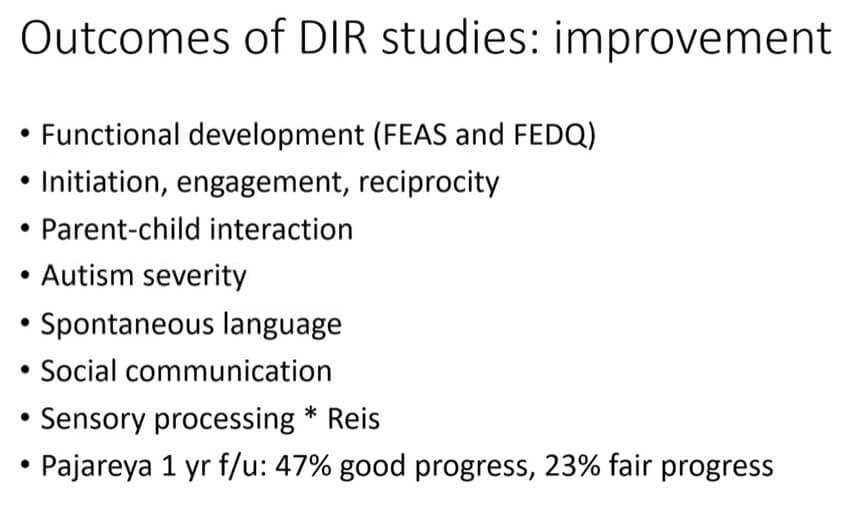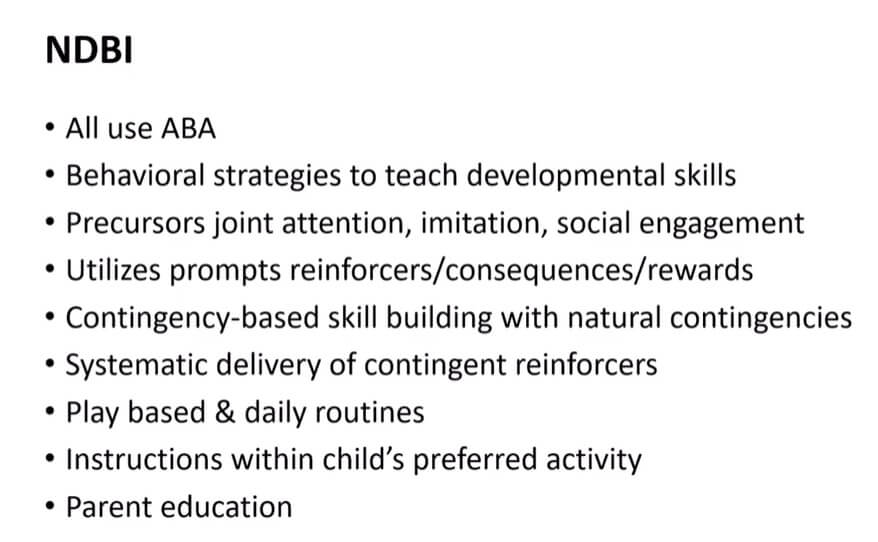Dr. Diane Cullinane joins us today to review some of the research supporting DIR/Floortime. She is a developmental pediatrician and an Expert DIR/Floortime practitioner in South Pasadena, California. She was a co-founder and the executive director of PCDA, Professional Child Development Associates, until she recently retired in December. She is also one of the founders of the DIR Coalition of California which advocates for DIR/Floortime and the author of Behavioural Challenges in Children with Autism and other Special needs: The Developmental Approach.
This topic comes up when people haven’t heard of DIR/Floortime. They ask, “What about research? Can we justify this approach with research?” Dr. Cullinane wrote a ‘white paper’ summarizing the research to date in 2017 which is on the research page of the International Council on Development and Learning. She has just updated that paper based on the presentation today and you can download it HERE. I also did a podcast with her colleague Dr. Joshua Feder last year about how we are seeing a move away from behavioural approaches towards ones that include developmental approaches.
Research Supporting DIR/Floortime
Evidence-based practice
Research is one part of a decision-making process. When deciding what’s the best approach to use with a child, we look at clinical expertise, observations, and experience as well as individual characteristics, values, circumstances, preferences and culture along with research. We also inevitably compare a new approach with Applied Behaviour Analysis (ABA) which has been around the longest and is the most popular approach.
ABA is a way of looking at behaviour and changing behaviour. We contrast that with a developmental approaches, sometimes called relationship-based approaches and under the heading of developmental social pragmatic interventions. The Developmental, Individual differences, Relationship-based (DIR) Model is the leader in developmental approaches, Diane says. It is the most comprehensive of the developmental approaches.
Dr. Cullinane then describes some other terms used in research. Naturalistic Developmental Behavioural Interventions (NDBI) that were created because ABA wasn’t really successful with young children. They took some of that behavioural framework and applied it more in play, looking at some of the foundational elements of language, in particular.
Next, Naturalistic Interventions came along. These include behavioural and developmental approaches. Then another term that’s used is a Parent-Mediated Intervention, or Parent-Implemented Intervention, which can be behavioural or developmental.
Developmental Approach
Developmental approaches follow a development framework. DIR/Floortime uses developmental capacities starting with a foundation of regulation, shared attention and engagement: warmth, trust, and joyful, pleasurable interactions, which is quite unique to the developmental approach. It is also holistic. We keep the foundations of warmth and engagement as we go up to higher capacities. The focus is so strongly on social-emotional development, relationships, and affective attunement.
The parent is in this approach which is individualized to both the child and parent, taking into account the relationship. Follow the child’s lead, and all behaviour is meaningful are two characteristics of this approach. There’s less of an adult agenda and it’s generally less structured than behavioural approaches. There is a difference between teaching skills and encouraging a child to learn those skills. Dr. Cullinane then described some early case reports by Dr. Stanley Greenspan and Dr. Serena Wieder who showed that autistic kids were capable of spontaneous communication.
It was such important work because they established that autistic children could reach the higher levels of development in the model. Co-regulation, taking the perspective of others and empathy are higher developmental milestones that all children move towards. This approach follows the developmental process that all children go through.
The Studies
Developmental approach studies Next, Dr. Cullinane went through some developmental approach studies. She especially highlighted the Mahoney et al. study that showed why a highly structured approach is not needed. The focus was on parent responsivity, with a focus on contingency and affect matching, and reading every behaviour as an indication of a child’s interest. The trend is that the studies focused on the parent-child relationship, and on the parent’s ability to respond contingently.
The Green article in 2010 it described how they worked with parents and how they promoted their ideas and creativity and the interaction pattern between the children and parents. Dr. Cullinane also highlighted the ‘Turtle Project’ that’s been going on for 40 years. They had children between ages 2.5 and 16.5 in a 4-year study that focused on relationships and included IQ mentioning–citing Greenspan–that cognitive and social development are inseparable. The outcomes of these studies all show improvements in what was targeted: social interaction, social-emotional functioning, reciprocation, etc.
DIR/Floortime studies Dr. Cullinane started by going over the P.L.A.Y. Project, which you can learn more about in our past podcast here. Outcomes of all of the DIR studies are shown in the slide.
The Review Studies Dr. Cullinane next went over the reviews which are important because policy is based on outcomes highlighted in these studies. She included the review study we discussed in a past podcast with Amanda Binns.

Dr. Cullinane recommends that anyone doing advocacy to focus on the more recent review studies rather than older ones that had some issues with methodology. She then discusses the Sandbank et al. review that looked at findings, but when they only considered the randomized control trials, behavioural approaches did not have the outcomes of developmental ones. They also state that if insurance companies only include behavioural methodologies they should revise their policies to include developmental ones.
Is ABA the only evidence-based treatment?
Dr. Cullinane clearly demonstrates that although ABA has been around longer and has a larger volume of research, it’s based on more observable and discrete behaviours and skills. Developmental approaches measure intangibles of parent-child relationship and are less structured. They look at development in a more holistic, humanistic way and have a very different understanding of how children change. Each developmental stage emerges to the next level. It’s not about teaching the child to engage, but about them wanting to engage.
We have very broad goals: we want children and parents to be spontaneous and creative, so it makes those research parameters harder to set up, but it is happening. Developmental approaches are becoming more accepted as evidence-based practices, she concludes. This trend will continue as more research is published. Dr. Cullinane shared the poor outcomes of ABA from military bases from the Department of Defense Tricare where they have started to implement the P.L.A.Y. Project instead at multiple military bases.
What does DIR/Floortime offer?
Dr. Cullinane next reviews what the Developmental, Individual differences, Relationship-based (DIR) Model offers. She reviews the ‘D‘, the ‘I‘, and the ‘R‘, pointing out that the developmental capacities the model describes goes well beyond the early social-emotional capacities right up to the highest levels of human functioning including personal values, etc. DIR is a universal model of child development.
The Future for Research
Dr. Cullinane then suggests some areas that future research could benefit from targeting including sub-populations including girls, older children, higher levels of development, and different sensory profiles. She also points out that while parent responsivity is essential, Dr. Greenspan said we also have to challenge the child after joining them.
How do we define how we challenge children in play without making it sound like a behavioural strategy (because that’s not what it is)? This is missing in the methodology, she suggests. Other areas for future research is technology that can detect patterns of engagement, direct brain measures and looking at the brain itself, and finally genetics where you can target patterns of engagement in the developmental process.
If anyone is interested in doing research on DIR/Floortime and the developmental approach, Fielding University has the PhD program in Infant and Early Childhood Development where many DIR Experts are on faculty. There is data available waiting to be analyzed and reported on. Feel free to contact us if you have interest.
Thank you to Dr. Cullinane for this informative and useful podcast on the evidence base for DIR/Floortime. All the best to her in her retirement! If you found this blog post helpful, please consider sharing it on Facebook or Twitter or share any relevant comments below.
Until next week, here’s to affecting autism through playful interactions!






Excellent article!
Very interesting and useful especially for those just initiated in this approach. Thank you!